Building inspections are a critical component of the real estate transaction process, offering valuable insights into the condition of a property. They provide buyers, sellers, and lenders with essential information to make informed decisions. This comprehensive overview will explore the various types of building inspections, their significance, and the key requirements involved.
Types of Building Inspections:
Pre-Listing Inspections (for Sellers):
- Purpose: Identify potential issues before listing the property, allowing sellers to make necessary repairs or address concerns proactively. This can increase the property’s marketability and potentially fetch a higher selling price.
- Key Requirements: A comprehensive pre-listing inspection should cover all major systems and components of the property, including structural integrity, electrical and plumbing systems, HVAC, roof, foundation, and more.
Pre-Purchase Inspections (for Buyers):
- Purpose: Uncover any hidden defects or potential problems that could impact the buyer’s decision to purchase or allow for negotiation of the purchase price.
- Key Requirements: Similar to pre-listing inspections, pre-purchase inspections should cover a wide range of areas, including structural integrity, electrical and plumbing systems, HVAC, roof, foundation, and more.
Lender Inspections:
- Purpose: Conducted by lenders to assess the property’s value and ensure it meets their lending criteria. These inspections primarily focus on the property’s condition and its suitability for collateral.
- Key Requirements: Lender inspections often focus on the property’s overall condition, including its habitability, structural soundness, and compliance with local building codes.
Pest Inspections:
-
- Purpose: Identify the presence of pests such as termites, bed bugs, and rodents.
- Key Requirements: Pest inspections typically involve a thorough visual inspection of the property’s interior and exterior, including attics, crawl spaces, and surrounding areas.
Key Requirements for Building Inspections:
- Qualified Inspectors: It’s crucial to engage qualified and experienced building inspectors with relevant certifications and licenses.
- Comprehensive Coverage: The inspection should cover all major systems and components of the property, including structural integrity, electrical and plumbing systems, HVAC, roof, foundation, and more.
- Detailed Reports: Inspectors should provide detailed written reports outlining their findings, including photographs and supporting documentation.
- Objective Assessment: Inspectors must maintain objectivity and provide unbiased assessments of the property’s condition.
- Compliance with Standards: Inspections should adhere to relevant industry standards and best practices.
Benefits of Building Inspections:
- Informed Decision-Making: Building inspections provide buyers and sellers with valuable information to make informed decisions regarding the property.
- Price Negotiation: Inspection findings can be used to negotiate the purchase price or request repairs from the seller.
- Risk Mitigation: By identifying potential issues upfront, building inspections can help mitigate risks and avoid costly surprises down the line.
- Peace of Mind: Knowing the true condition of the property can provide both buyers and sellers with peace of mind.
- Improved Property Value: Pre-listing inspections can help sellers identify and address issues that could negatively impact the property’s value.
Conclusion:
Building inspections play a vital role in the real estate transaction process. By understanding the different types of inspections, their significance, and the key requirements involved, buyers, sellers, and lenders can make informed decisions and navigate the real estate market with greater confidence.

